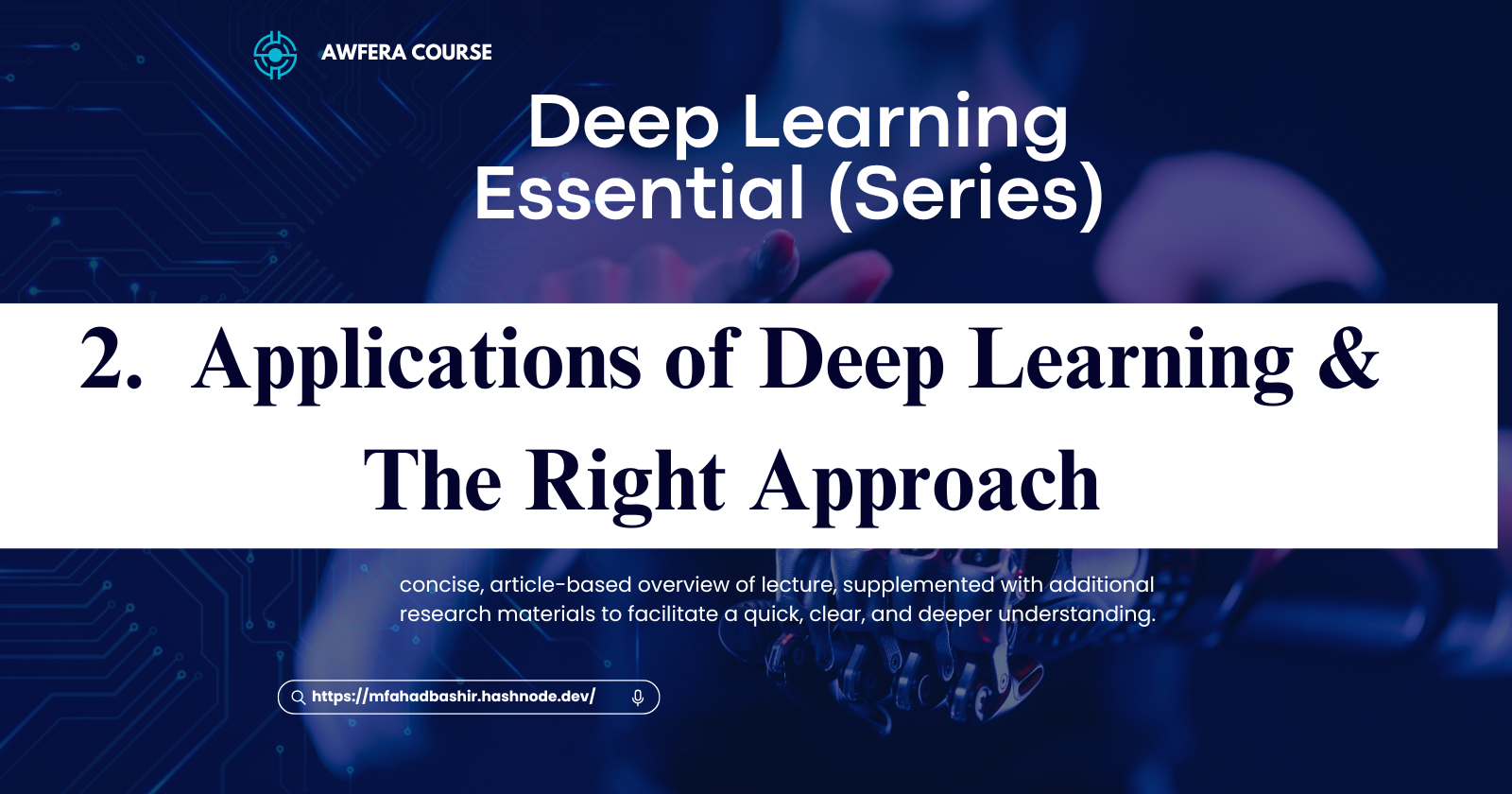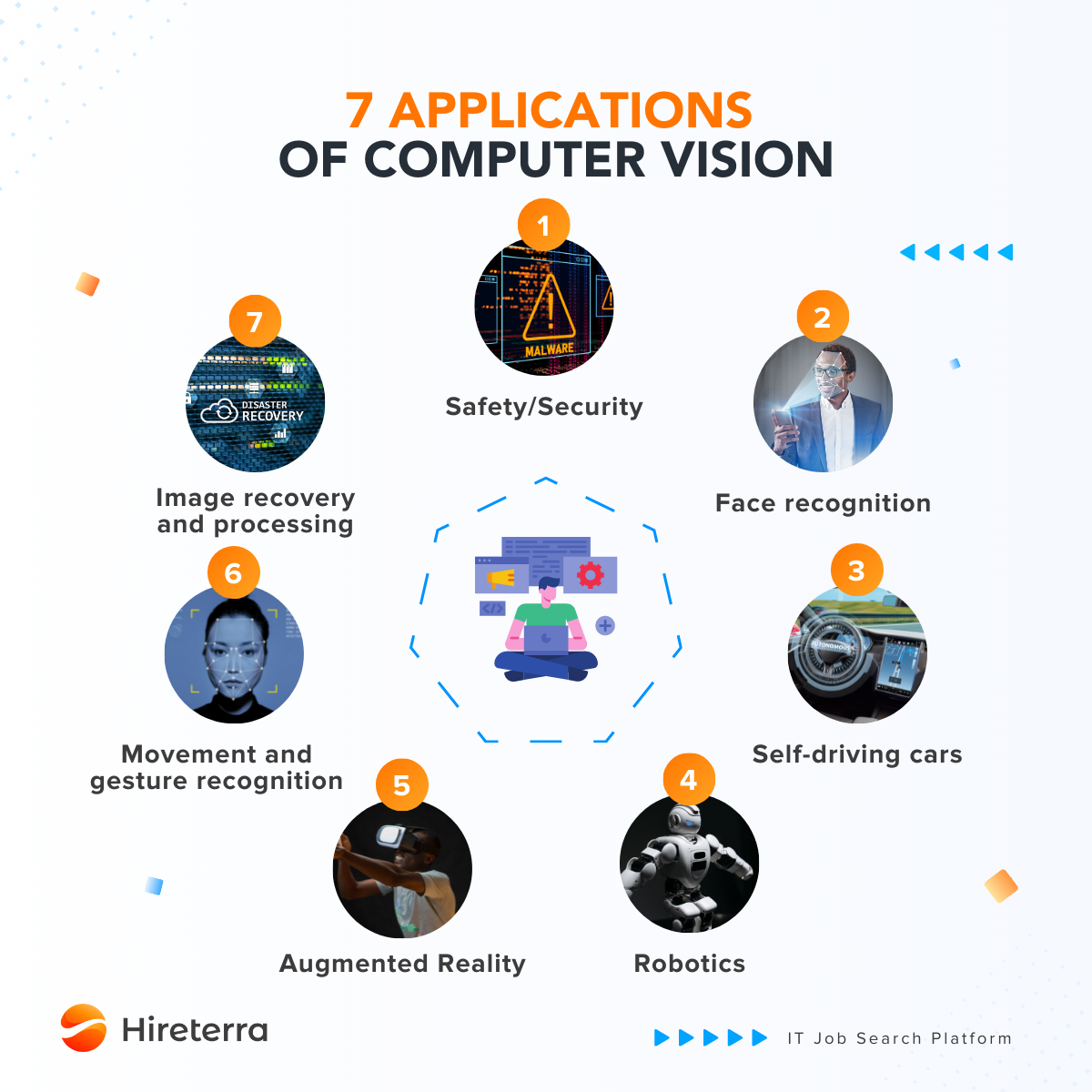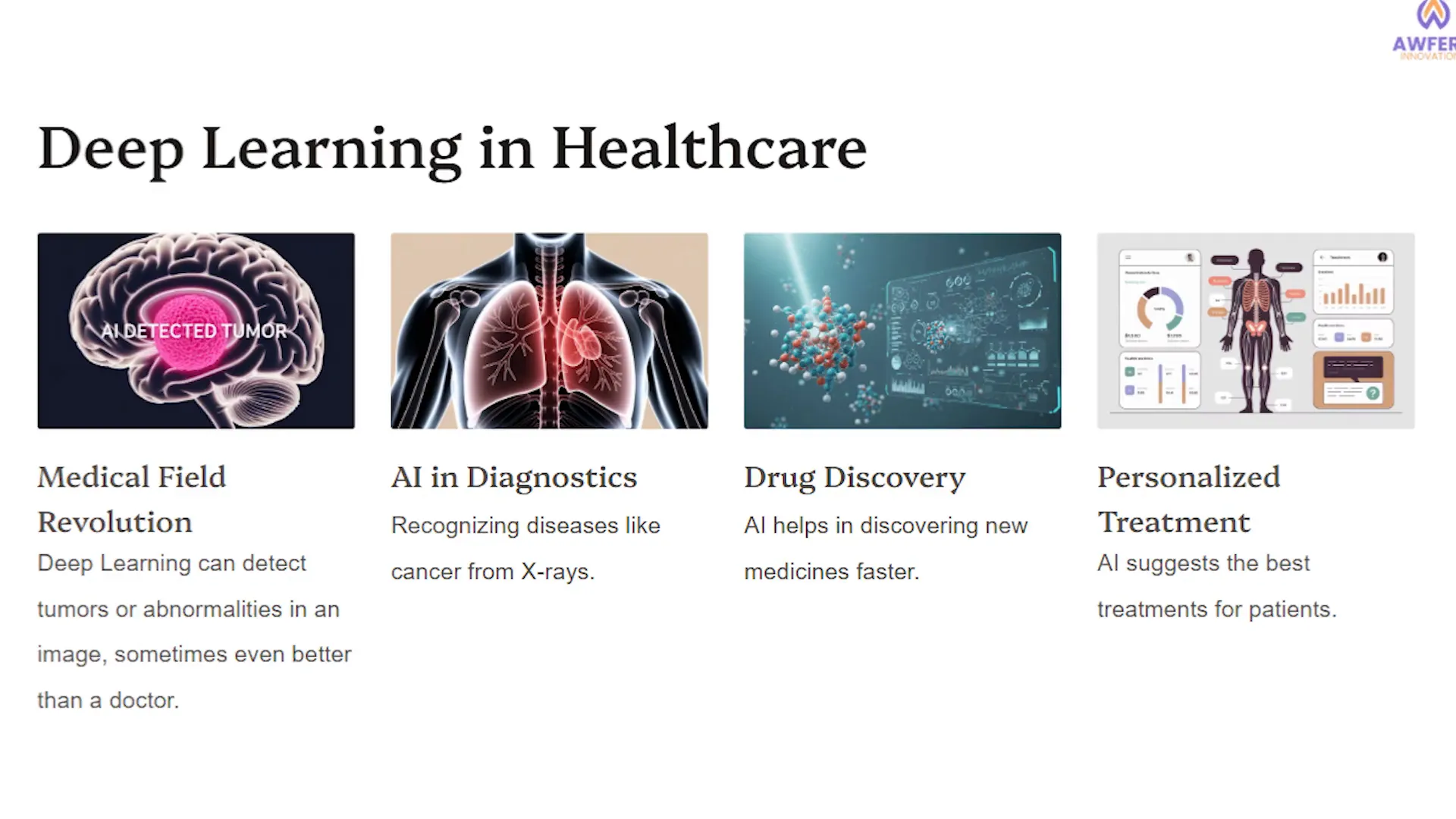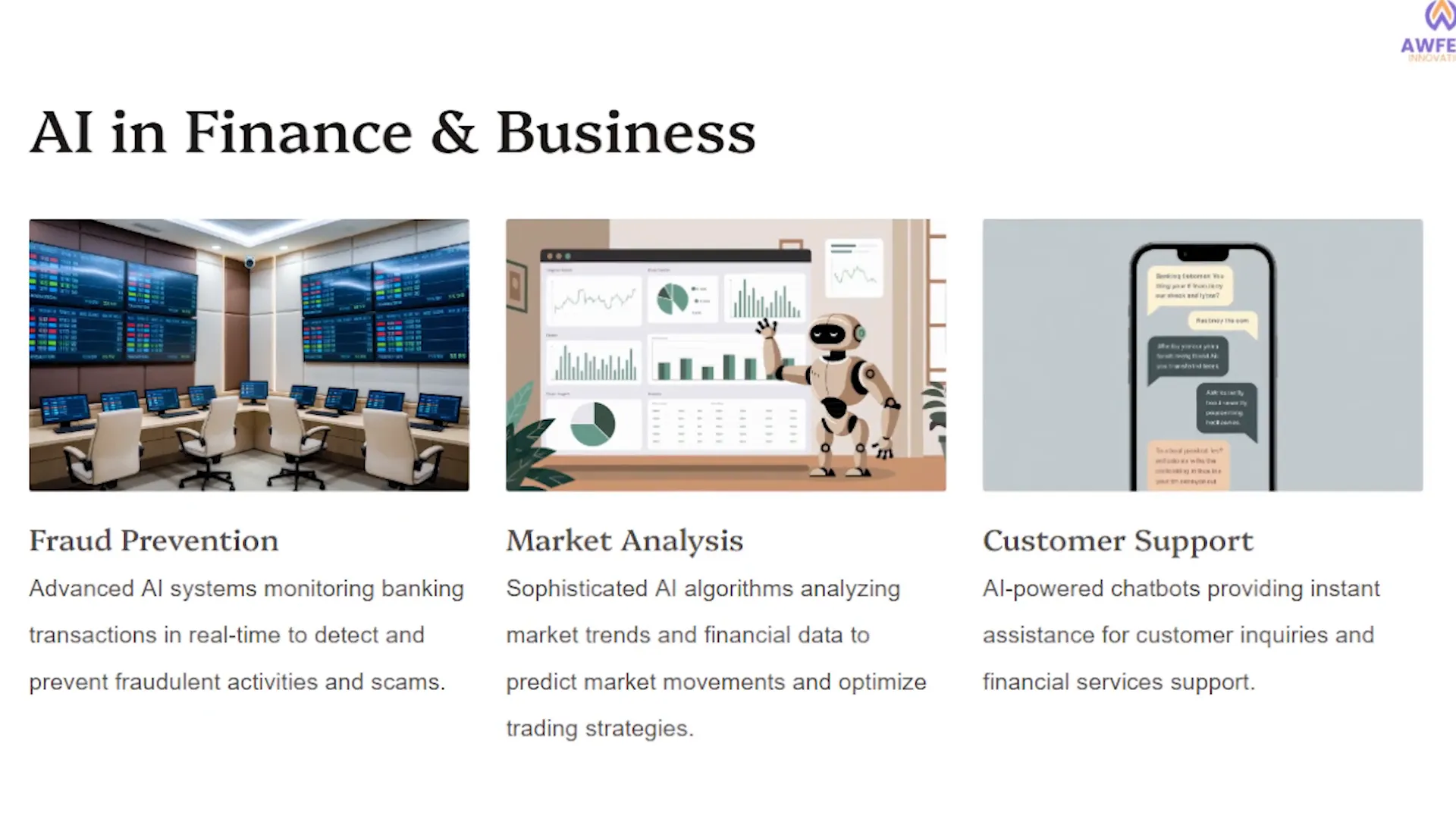2. Applications of Deep Learning & The Right Approach
 Muhammad Fahad Bashir
Muhammad Fahad Bashir
Deep learning is revolutionizing how we understand and interact with technology. So, today, we'll dive into its applications, exploring how it's reshaping industries and enhancing our daily lives.
Advice for Learning Deep Learning
Right Approach and the way
Understanding deep learning's importance is crucial. It's not just a trend; it's about knowing its practical applications, like in self-driving cars and healthcare. This understanding can inspire further learning. Rather than following the trend, it's better to grasp its benefits and uses, which can empower your career and help you make informed tech decisions.
Decoding the Thought Process
Many start learning AI because it's popular, but real understanding comes from seeing its practical benefits. Instead of just memorizing, explore how deep learning is used to gain motivation and a deeper grasp of the subject.
Deep Learning in Action
Deep learning has enabled computers to recognize faces and voices, a skill once unique to humans. This advancement allows machines to categorize images and sounds, expanding the possibilities of what technology can achieve.
Applications of Deep Learning

4.1 Computer Vision
Computer Vision enables computers to interpret and analyze visual data. Some key applications include:
Facial Recognition: Used for unlocking smartphones, security surveillance in airports, and identifying individuals in large crowds.
Object Detection: Helps in security and surveillance systems, such as detecting weapons or suspicious activities in malls.
Thermal Scanners: Used during COVID-19 to measure people’s temperature in real time using deep learning.
Why It Matters:
Enhances security by identifying threats quickly.
Assists in healthcare, such as scanning for symptoms.
Simplifies everyday tasks like unlocking phones via Face ID.

4.2 Natural Language Processing (NLP)
NLP enables machines to understand and generate human language. Some common applications include:
Voice Assistants (Siri, Alexa, Google Assistant): Understand and respond to user queries.
Chatbots: Provide 24/7 customer support and automate responses to common inquiries.
Translation Apps: Convert speech or text from one language to another in real time.
Why It Matters:
Breaks language barriers, facilitating global communication.
Provides instant support, enhancing user experience.
4.3 Healthcare
Deep learning has revolutionized the healthcare industry in multiple ways:
Medical Imaging: Detects tumors and abnormalities in X-rays, MRIs, and CT scans, sometimes outperforming human experts.
Personalized Treatment Plans: Recommends optimal treatments based on patient data.
Drug Discovery: Accelerates the identification of new medicines, potentially saving lives.
Why It Matters:
Enables early disease detection, improving patient outcomes.
Automates repetitive tasks, allowing doctors to focus on patient care.

4.4 Self-Driving Cars
Autonomous vehicles rely on deep learning to function effectively:
Obstacle and Pedestrian Detection: Ensures safe navigation.
Traffic Signal and Road Condition Recognition: Helps in adhering to traffic rules.
Autonomous Navigation: Allows vehicles to drive without human intervention.
Why It Matters:
Reduces human errors, making roads safer.
Enhances mobility for people with disabilities.
Lowers transportation costs in the long run.
4.5 Creative Applications
Deep learning is making an impact in artistic and creative fields:
AI-Generated Art and Music: Creates original artwork and compositions.
Deepfakes: Produces realistic videos of people doing or saying things they never actually did.
Why It Matters:
Unlocks new possibilities for artists and musicians.
Raises ethical concerns regarding misinformation and identity theft.
4.6 Finance and Business
Deep learning enhances efficiency and security in financial sectors:
Fraud Detection: Identifies unusual transactions and suspicious activities.
Stock Market Prediction: Analyzes market trends to help investors make informed decisions.
Automated Customer Support: Uses chatbots to provide quick solutions to customer queries.
Why It Matters:
Reduces financial risks by detecting fraudulent activities.
Helps businesses make data-driven decisions, improving profitability.

4.7 Assistive Technologies
Deep learning has enabled tools that improve accessibility for individuals with disabilities:
Smart Glasses for the Visually Impaired: Help users navigate their environment.
Speech-to-Text Applications: Assist those with hearing impairments.
Why It Matters:
Enhances the quality of life for individuals with disabilities.
Promotes inclusivity by making technology accessible to all.
4.8 The Future of Deep Learning
Deep learning continues to evolve, with potential breakthroughs in:
Drug Discovery: Accelerating medical research and treatment development.
Personalized AI Assistants: Improving productivity and daily life.
Climate Prediction: Helping scientists combat environmental challenges.
Why It Matters:
Drives technological advancements in various industries.
Solves critical global issues, such as healthcare and climate change.
Expands the capabilities of AI, shaping the future of human-machine interaction.
Conclusion
Understanding deep learning and its applications is essential for anyone looking to thrive in today's tech-driven world. As this technology continues to evolve, those who take the time to learn and adapt will find themselves better equipped to navigate the changes ahead.
So, whether you're a student, a professional, or simply curious about technology, now is the time to engage with deep learning. Explore its applications, understand its implications, and be part of the conversation shaping our future.
View of Series: Click Here
Subscribe to my newsletter
Read articles from Muhammad Fahad Bashir directly inside your inbox. Subscribe to the newsletter, and don't miss out.
Written by
